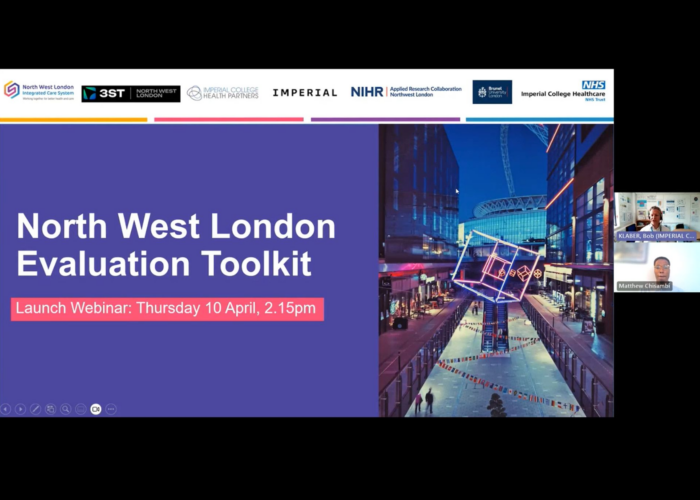[vc_row][vc_column][button size=”smallmedium_rd_bt” use_icon=”yes” icon_type=”bt_icon_border” icon_color=”#ffffff” t_color=”#ffffff” b_color=”#00966c” alt_b_color=”#007864″ t_hover_color=”#ffffff” b_hover_color=”#6f6f6f” url=”http://imperialcollegehealthpartners.com/af-budget-impact-model/” icon=”ba-document2″]Atrial Fibrillation Budget Impact Model[/button][/vc_column][/vc_row][vc_row][vc_column][vc_column_text] We’ve today published our new Atrial Fibrillation (AF) Budget Impact model, which supports commissioners to measure the value in identifying and treating patients with AF, as well as the potential savings of new treatment interventions. The model uses published data of primary care performance, QOF targets and prevalence estimates to identify optimal goals for AF management, help commissioners to create realistic business plans for treating the condition. It helps users to estimate the budget impact of interventions within a CCG or AHSN footprint, and a model for Sustainability and Transformation Partnership (STP) footprints will follow shortly.
We’ve today published our new Atrial Fibrillation (AF) Budget Impact model, which supports commissioners to measure the value in identifying and treating patients with AF, as well as the potential savings of new treatment interventions. The model uses published data of primary care performance, QOF targets and prevalence estimates to identify optimal goals for AF management, help commissioners to create realistic business plans for treating the condition. It helps users to estimate the budget impact of interventions within a CCG or AHSN footprint, and a model for Sustainability and Transformation Partnership (STP) footprints will follow shortly.
What information does the model include?
The model allows the estimation at both CCG and AHSN level, of the potential clinical and cost consequences of:
- Patients with AF, not on practice registers;
- Patients known to have AF, not risk assessed;
- Patients eligible for anticoagulants, not on treatment;
- Patients on treatment, inadequately anticoagulated.
The tool’s budget impact model and base case are informed using data taken from the NICE CG180 Guideline but the tool does allow but the user to input their own variables. As there have been studies published since the guidelines were published in 2014, users may want to use this data to inform the model. For example, the recently published paper in the European Stroke Journals suggests the benefits of preventing a stroke maybe higher than that in the guidelines. You can read more about how we calculate the costs of stroke care that go into our model with our Head of Business Intelligence’s blog.
Endorsements
The tool has been endorsed by a range of stakeholders across Public Health England and NHS England:
Dr Matt Kearney, National Clinical Director for Cardiovascular Disease Prevention at NHS England, says:
“The AF Budget Impact Model will be of enormous help to CCGs and local authorities. We know there is opportunity to do much better at preventing AF-related strokes. The new calculator puts realistic local numbers on this. For every CCG it shows the magnitude of current gaps in care, the costs of improving detection and treatment, the costs of stroke and major bleeds, and the health and social care savings delivered by preventing strokes. And the conclusion is very clear – spending money on stroke prevention in AF protects patients and their families from life changing illness AND delivers early return on investment.”
“ICHP’s new AF Budget Impact Model is an exciting innovation, which will enable commissioners to plan more efficiently for improved detection and treatment of AF in their area. I look forward to seeing how the model contributes to our collective goal of reducing the numbers of patients with undetected AF, and improving the treatment of those already with the condition,” says Professor Huon Gray, National Clinical Director for Heart Disease, NHS England.
and
“We see this tool as a key enabler to drive forward improvements across the care pathway to reduce the devastating and largely avoidable impact of AF-related strokes to patients and their families,” says Shakti Dookeran, National AF-related stroke prevention lead at Public Health England.
Next steps
To create the tool, we updated the current AHSN Network Budget Impact model using the latest QOF data. A number of other AF tools are planned for publication in the near future so do please join us on Twitter, LinkedIn or sign up to our monthly e-bulletin to keep up to date!
If you have any queries about the model, please contact our Business Intelligence team on
B.i@imperialcollegehealthpartners.com
If you work in the public sector and are interested in partnering on models like this please contact Sheriece Bracey on Sheriece.Bracey@imperialcollegehealthpartners.com[/vc_column_text][/vc_column][/vc_row]



